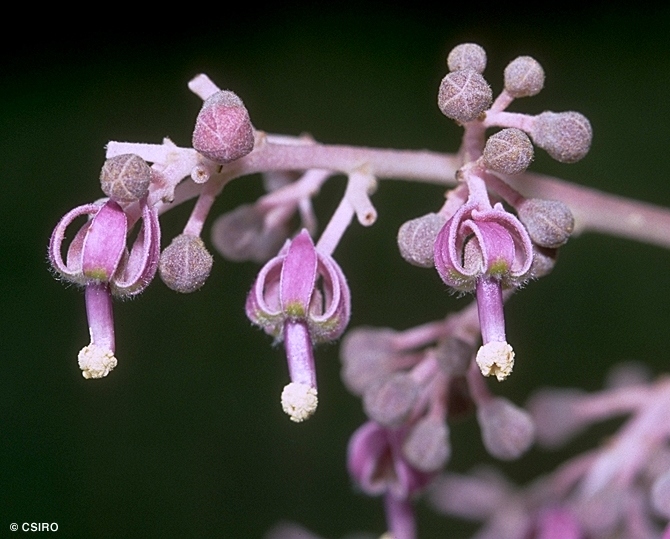Australian Tropical Rainforest Plants - Online edition
Firmiana papuana Mildbr.





Mildbraed, J. (1929) Engler Jahrb. : 365. Type: Neu - Guinea: Sudwestl. Hinterland der Astrolabe - Bucht; 27 April 1908, R. Schlechter 17614.
Lacewood
Deciduous; leafless for a period between August and October. Lenticels tend to be in longitudinal lines. Conspicuous large speckles generally apparent in the outer blaze. Fine oak grain in the wood and a corresponding pattern in the inner blaze.
Leaf blades about 8-21 x 7-17 cm, often +/- cordate, at least at the base, and drawn out into a tip or sometimes lobed at the apex. Midrib, four major and two minor lateral veins radiating from the point of attachment of the petiole. Twig bark strong and fibrous when stripped. Twigs rather pithy, pores in the pith visible to the naked eye and readily visible with a lens.
Cotyledons oblong to obovate, about 25-30 x 20 mm, 3-veined at the base. First pair of leaves cordate, sometimes peltate, apex acuminate. At the tenth leaf stage: leaves cordate, sometimes peltate, apex acuminate, upper surface of leaf blade glabrous; stipules about 2-3 mm long, clothed in pale brown stellate hairs. Seed germination time 39 to 102 days.
Occurs in CYP and NEQ, mostly known from the Atherton Tableland area. Altitudinal range from 600-800 m. Usually found in drier, more seasonal rain forest or in marginal situations. Usually grows on red soil derived from basalt and easily mistaken for the common Flame Tree (Brachychiton acerifolius) except when it produces its blue or mauve flowers. Also occurs in New Guinea.





